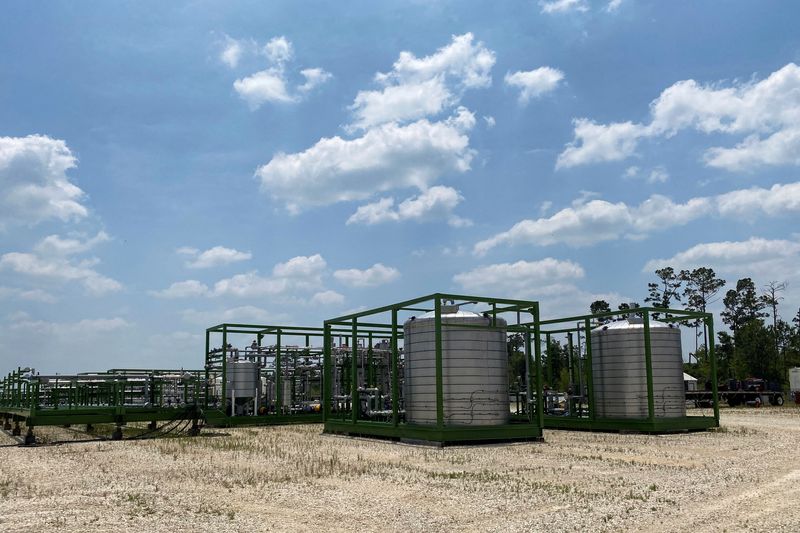By Ernest Scheyder
PITTSBURGH (Reuters) – The mining industry is working to boost freshwater recycling while also developing direct lithium extraction (DLE) technologies as it races to reinvent how the battery metal is produced for the green energy transition, executives said.
The surging global demand for lithium has sparked widespread interest in DLE technologies, which use less land and can operate far faster than hard rock mining and brine evaporation ponds – the traditional ways to process the white metal.
Some types of DLE technologies, though, require 180 metric tons or more of water to produce a single metric ton of lithium, a usage that has sparked controversy in arid regions seeking to conserve potable water and one that has offset DLE’s purported promise of curbing the mining industry’s large water use.
Now, DLE developers are racing to boost freshwater recycling as they fine tune technology, part of a push to ensure they do not lose community support before their industry has a chance to go fully commercial.
“If we cannot do a good job of recycling that water and reducing our water footprint, we’re going to get crushed,” John Burba, executive chairman of International Battery Metals, told the Reuters Events Industry Transition conference in Pittsburgh this week. “DLE is a very water-intensive process.”
Burba told the conference that IBAT – which has held talks to license its DLE technology with Exxon Mobil, Chevron and others – recovers 98.5% of the freshwater used during its lithium production process, and is aiming to boost that further.
Privately-held EnergyX, which counts General Motors as an investor, said it can recover as much as 90% of its freshwater, a number its scientists are working to increase.
“Getting it down to maybe five or 10 or 15 (metric) tons of freshwater per ton of lithium is kind of where you want to be,” said EnergyX CEO Teague Egan.
Controlled Thermal Resources, which is developing a geothermal lithium project in California’s Salton Sea to supply GM and Stellantis, recycles a gallon of water at least eight times and will produce water via steam from its geothermal power process, said CEO Rod Colwell.
“How many times we can recycle? That’s really the big question,” said Colwell.
E3 Lithium, which is backed by Exxon’s Imperial Oil, began testing three DLE technologies last month in Alberta and aims to install water recycling facilities as it goes commercial, said CEO Chris Doornbos.
“You end up having a small water treatment facility with your processing facility so they can reuse that water over and over and over again,” said Doornbos.
GO COMMERCIAL
Each of the developers said they expect at least one DLE technology to commercially launch by early 2025, a step that is expected to boost the entire industry.
“DLE is a tool that is growing and improving to allow us to unlock brines that might have been uneconomic in the past,” said Emily Hersh, CEO of privately-held mining explorer Luna Lithium.
Whereas DLE once had many questioning if it even could replace traditional lithium mining, those worries have now faded, executives said.
“The question of ‘if DLE works’ is gone now. It’s an engineering challenge. It’s not a technological challenge,” said E3’s Doornbos.
The push to curb water use, executives said, should in time help assuage some concerns from the EV industry about mining’s environmental impact amid the rising demand for lithium, executives added.
“Every single (automaker) realizes that lithium is the limiting factor in them producing electric vehicles,” said EnergyX’s Egan.
(Reporting by Ernest Scheyder; Editing by Sharon Singleton)
